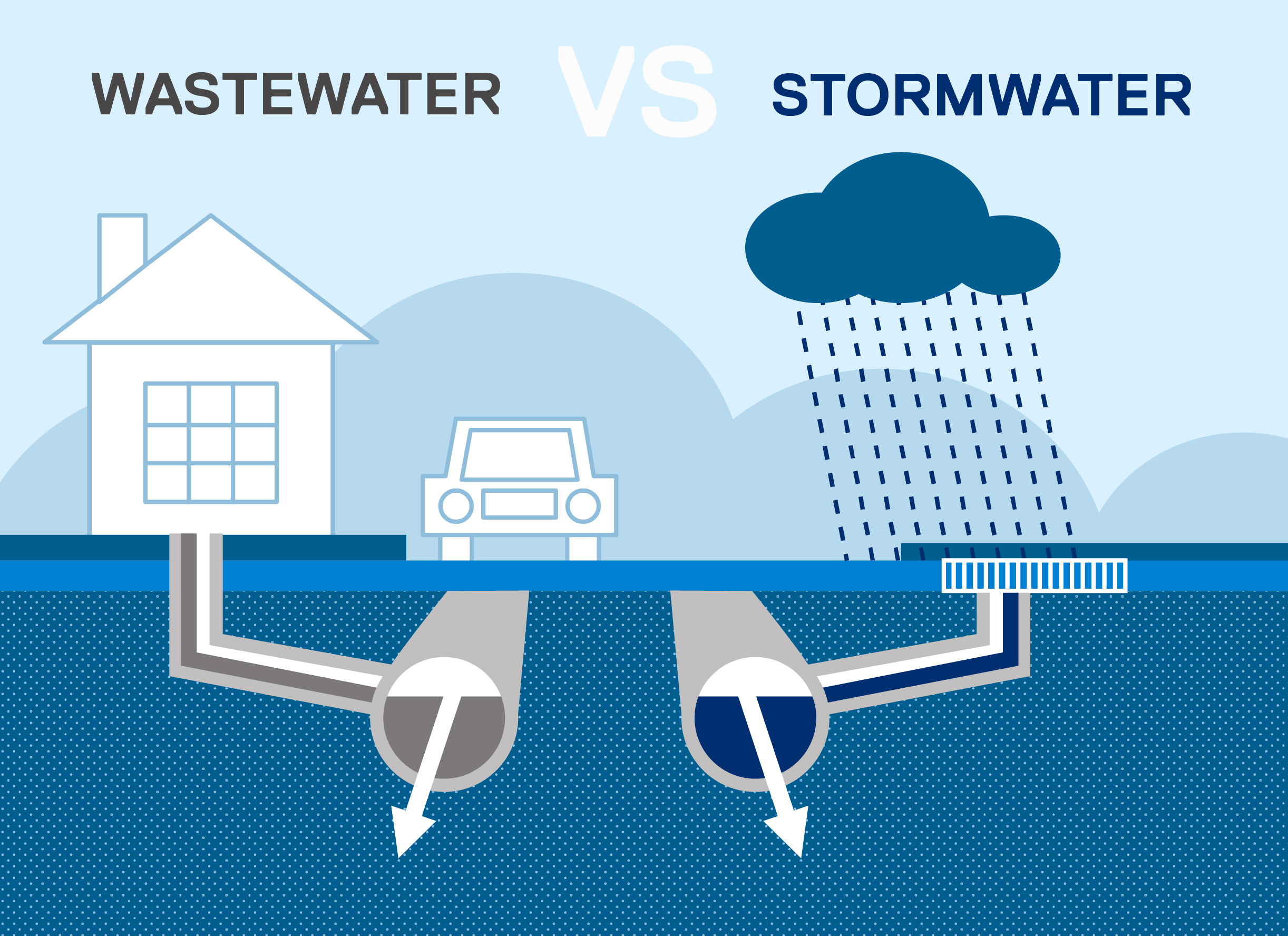Below the Surface
Wastewater Vs. Stormwater: How Do They Impact Your Municipality?
Every year, excess wastewater and stormwater strain municipalities all over the country. Thanks to aging sewer systems, growing populations, and powerful storms, wastewater and stormwater regularly cost billions of dollars in repairs and maintenance.
While often discussed interchangeably, wastewater and stormwater are slightly different, so it’s critical for policy makers and engineers to know the difference. Read on to learn what makes each of these unique—and how to manage them.
What Is Wastewater?
Wastewater is water that has been used in homes and businesses and is then sent to treatment plants. It frequently includes water from:
- toilets
- washers
- sinks
- bathtubs
- dishwashers
- industrial machinery
- other appliances and machines
What Is A Wastewater System?
A wastewater system generally includes one of two systems:
- A Septic Tank - A septic tank is an underground container that partially treats household wastewater before it reaches a drainfield. Septic tanks are commonly found in rural and suburban areas away from public sewer systems, and they must be regularly pumped to avoid overfilling.
- A Sewer System - A sewer system is a network of pipes that collects wastewater and stormwater to a centralized treatment facility or some other discharge point. You’ll find three sewer system types: a sanitary sewer for wastewater, a storm sewer for stormwater, and a combined sewer system for both.
What Is Stormwater?
Stormwater is rainwater, snow, or ice that runs off roads, sidewalks, parking lots, roofs, and other impermeable surfaces into waterways, including your sewer system.
What Is A Stormwater System?
A stormwater system is a connection of pipes and other infrastructure designed to collect and convey rainwater and snowmelt during and after storms. Stormwater systems are critical for flood prevention, especially after a community receives heavy quantities of rain, snow, sleet, or ice.
How Wastewater and Stormwater Impact Municipalities
Left unchecked, wastewater and stormwater can have a catastrophic impact on municipalities. Here are five of the biggest problems:
1. Public Health Risks
Improperly managed wastewater and stormwater can pose serious health threats. Overflowing sewer systems and contaminated runoff may contain bacteria, chemicals, and solid waste that harm public water sources and spread disease.
These issues become even more dangerous during major storms or flooding events, which can push untreated wastewater into streets, basements, and waterways.
2. Environmental Damage
When stormwater carries pollutants like trash, oil, pesticides, and chemicals into local ecosystems, it can severely damage wildlife habitats and water quality.
Just as bad: Wastewater leaks caused by aging infrastructure can harm surrounding soil and natural water sources. Both types of contamination reduce biodiversity and disrupt local ecosystems.
3. Financial and Economic Consequences
Municipalities face steep financial consequences from I&I and flooding-related damage. According to the American Society of Civil Engineers, urban flooding alone causes $9 billion in losses every year.
In addition to physical damages to homes, businesses, and roads, municipalities may face EPA fines for non-compliance or environmental violations. Property values may decline, and reputational damage can erode public trust—especially if issues go unresolved.
4. Infrastructure Strain and Long-Term Costs
Inflow and infiltration (I&I) adds unnecessary stress to wastewater treatment facilities, increasing operational costs and accelerating wear and tear on infrastructure. In fact, the American Society of Civil Engineers estimates I&I costs U.S. cities $100 billion every year.
Even worse, delaying repairs may lead to catastrophic system failures that are far more expensive than proactive maintenance. A single major failure can divert municipal budgets and staff attention for months, delaying other critical projects.
5. Compliance and Legal Liabilities
With stricter environmental regulations in place, municipalities must meet federal and state standards for managing both wastewater and stormwater.
Failure to do so can lead to costly penalties and legal battles. Investing in proper system inspections, repairs, and modernization isn’t just smart—it’s required to stay compliant.
How CUES Can Support Your Municipality
As global leaders in wastewater and stormwater inspection equipment, we’re your go-to resource for sewer inspections and repairs.
View our entire line of products or find your local CUES sales rep to learn more.
FAQ: Wastewater Vs. Stormwater
What’s the difference between wastewater and stormwater?
Wastewater is water that has already been used in a home or business. Stormwater is rain, snow, or ice that runs off roads, sidewalks, hills, or roofs.
How do you manage wastewater and stormwater?
Both wastewater and stormwater can be managed through sewer systems that convey the water to a treatment plant, as necessary, before transferring it to another location, such as a lake, river, or ocean.
